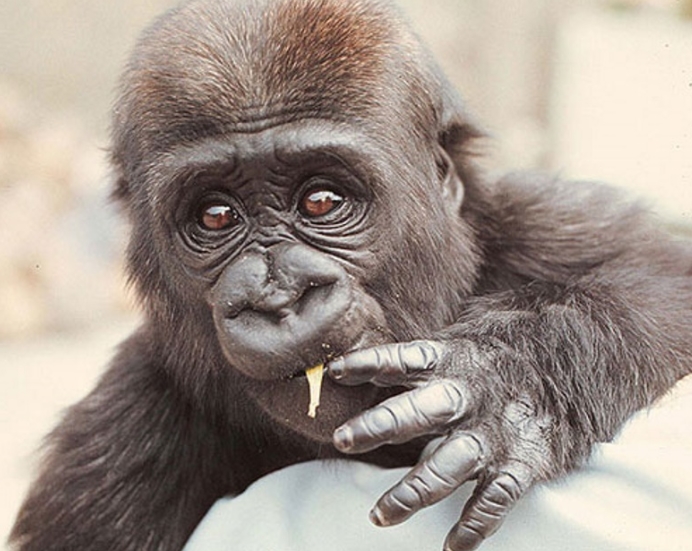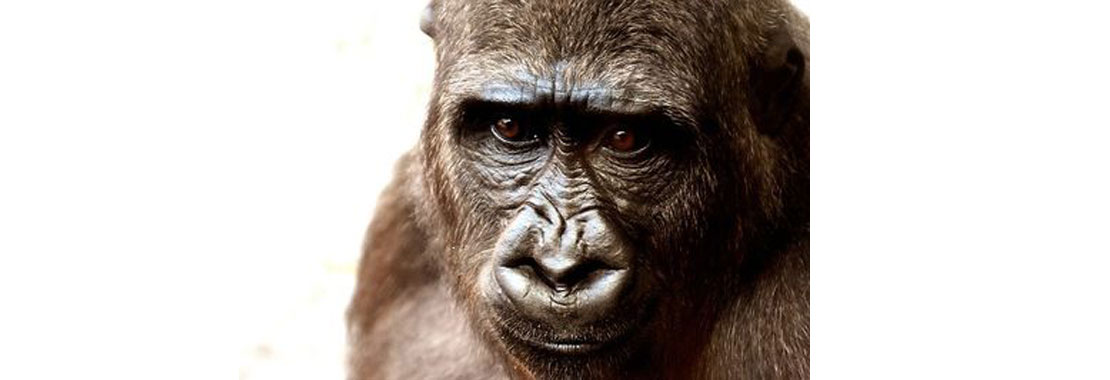

This young woman is idly testing her skills, occupying Koko while waiting for her supper. She had just learned signs for all colours, not just primary, but purple and gold and beige and so on. I’ve seen it often with the chimps, but nothing as clear cut as Koko’s behaviour. She preferred people to lie down!!!!!Īnd the other story that I love about Koko is the one that proves, once and for all, that the apes have a sense of humour. And Koko was very definite in her reply, said Penny. So I asked Penny to ask Koko if she preferred people to sit or stand when with her. Some of the students argued that clearly the chimps were so relaxed they could not care less. “It cannot be nice for the chimps to have you towering over them” I said. I always insisted that when they were observing a group of chimpanzees on the ground, resting or grooming, that the students should sit. And she answered a question for me, about which I had been arguing with some of my students working with Gombe’s wild chimpanzees.

She used her signs in meaningful and sometimes innovate ways.

She learned many signs throughout her life (some 1,000 we hear – and she also understood about 2000 spoken words). As I sat watching during that first visit, Penny had a conversation in sign language with Koko, and I was impressed by the gorilla’s calm personality. Though we, humans, gorillas and chimpanzees, are all great apes, gorillas are very different from chimpanzees. In my studies at Gombe of wild chimpanzees, I learned fascinating things about their nature and lives. She was not the first signing ape I met, for I was already familiar with Washo, the chimpanzee first taught sign language by the Gardeners, her tuition subsequently taken over by Roger Fouts (who also gave lessons to other signing chimpanzees, many of whom I met). I don’t remember exactly when that was, but she already knew a great many words. Progressġ) Designed the initial user-interface (UI) for the KokoApp, which features Signs, Videos, Books and Gorillas as the main menu tabs.Ģ) Identified a world-class app development company, who specializes in crowd-sourcing additional content, and open-ended app development and enhancement.I so well remember when I visited Koko, at the invitation of Francine (Penny) Patterson (the woman who taught Koko a modified form of American Sign Language), for the first time. Communication fosters empathy, and empathy is a pre-requisite for both true conservation and improved captive care. It also teaches a valuable language to humans of all ages and nationalities - one that can transcend current language barriers, and has the potential to facilitate communication between hearing and deaf communities. Thus, the KokoApp makes it possible for more captive gorillas to benefit from 2-way communication - by people decoding gorilla natural gestures, as well as learning and sharing some basic ASL.

Koko just happened to be taught one of our gestural systems - American Sign Language (ASL). Penny PattersonĤ) Include real-world examples of Koko interacting with her caregivers and other animals, with and without sign language subtitles (for educational purposes)ĥ) Enable the general public to help us translate Koko’s research videos by looking the signs up by description (hand configuration, location, and motion)Ħ) Provide a tool for the public to help translate gorilla natural gestures by uploading videos obtained while visiting zoos (or eco-tours in Africa)Īll gorillas use gestures to communicate. 1) Develop a cell phone app that helps people of all ages learn to sign with KokoĢ) Teach at least 100 of Koko’s favorite signs (both ASL and natural gestures) demonstrated by Koko herselfģ) Enable people to learn all 1000+ of Koko’s signs with help from Dr.


 0 kommentar(er)
0 kommentar(er)
